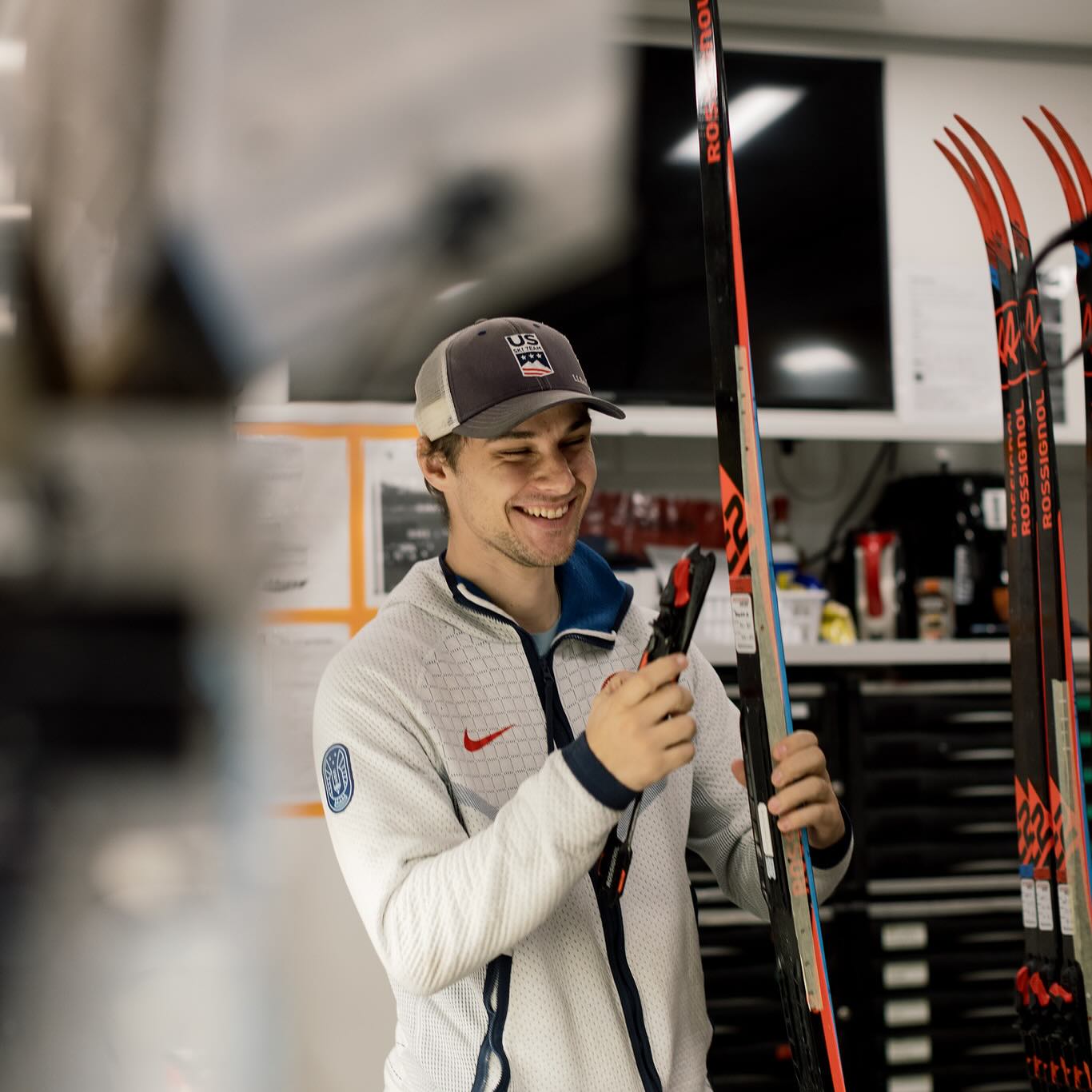How to Dress for Winter in Minnesota
Andrew.Parks
Wed, 11/06/2024 – 14:08
“There is no bad weather — just bad clothing,” is what every Minnesotan will tell you the second you start complaining about the cold. The next thing they’ll say to you? “Layer.”
Here’s how you can prepare your wardrobe for a Minnesota winter.
What To Read Next
Where to Watch Sports in Minnesota
Read More
Take a Wine, Beer & Spirits Tour from Wayzata to Waconia
Read More
Everything You Need to Know About Minneapolis-St. Paul’s Music Scene
Read More
Get help from the experts to plan your trip
Want to know the best spots in Minnesota? How about tips on how to make the most of your time in a specific city? Our Minnesota experts can answer your questions, offer advice, or plan the perfect Minnesota trip for you. For free.
Article
Devon Cox
BASE & MIDDLE LAYERS

A skier shops at Finn Sisu
Silk, merino wool, and performance synthetics are all great choices for a first (or second!) winter layer, depending on whether or not you’re going to be outside. (And, if you are, for how long.)
Drop by Joe’s Sporting Goods or Repair Lair to snag secondhand items from many well-known brands, or browse one of the Minnesota locations of Patagonia, REI or Sierra for brand new apparel. If you want to do an outdoor activity like skiing or snowshoeing, Finn Sisu — Minnesota’s favorite Nordic ski store — sells performance layers for winter athletes.

Credit: Faribault Mill
Pro tip? Don’t stop at the undershirt. Sometimes, a pair of silk or wool long-underwear is just what the doctor ordered for sub-zero days, and they disappear under jeans and trousers.
Either way, there’s one base layer you won’t want to skip out on: wool socks. Wool socks can be the difference between a cozy, hygge winter and something closer to a scene from “Fargo”. Grab a few heavier pairs to layer under snow boots and a few thinner pairs to wear around the house (we love the ones from local brand Faribault Woolen Mill). Your toes will thank you! If you don’t like the feeling of wool, REI and other outdoor brands make synthetic thinsulate socks that mimic the warming properties of wool but take out the itch.
OUTER LAYERS

Arc’teryx at Mall of America
There is no more important item than a good winter coat. Come January, all of Minnesota accepts looking like a hauté sleeping bag and shoves themselves into the biggest Michelin-man zip-up they can find. Think you’re too cool for a puffer? You’re not. Where do you think you are, Paris fashion week?
On the high end, Patagonia, Fjallraven, and Arc’teryx all sell high-quality, high-end winterwear. Mid-range retailers like The North Face, Columbia, and Cotopaxi (if you like color!) also make great options, and classic retailers like LL Bean and Land’s End make excellent, affordable coats that will last you many winters to come.

A couple colorful layers at Duluth Gear Exchange
Winter coats are a great item to buy secondhand. Consignment stores like Nu Look, Elite Repeat, and Duluth Gear Exchange carry lots of winter coats, and you can often score a big brand name for less than half off retail.
No matter where you decide to purchase, here are some things to look for:
- Bound cuffs; they prevent the wind from getting in.
- Fill material; both down and synthetic fills can be plenty warm, but you may have a preference based on allergies or feel. And don’t let a higher fill count fool you into spending more money. Fill count matters for weight and packability, but it doesn’t make your coat warmer. You can usually find information about fill material on the inner tag of the coat.
- Waterproof shell; is the jacket’s shell waterproof? This is a must in our (usually) snowy winters. If you aren’t buying new, feel the jacket in your hands, or splash a little water on it from a water bottle. Does it bead, then fall off? Or absorb into the material?
Still can’t bring yourself to embrace the puff? Look for a fully lined, insulated overcoat with a 100-percent wool outer shell. Just make sure you finish your outfit with a scarf and hat, okay?
ACCESSORIES

Credit: Chopper Mill
Hats and gloves are much more than accessories in a Minnesota winter. You’ll want a couple different pairs of hand coverings – something for everyday wear and something for shoveling or extended periods of outdoor time.
In the super-warm handwear category, local makers prevail. Chopper Mill and Frost River both make heavy-duty mittens made and tested in real Minnesota winters. Minnesota Mittens are slightly less heavy-duty but come in cute patterns and are made with USA-manufactured yarn.
When it comes to hats, there’s only one cardinal rule – cover your ears! We love the knit beanies from MN-based brands Love Your Melon, Northmade Co., and SOTA Clothing. For truly bone-chilling days, consider investing in a balaclava.

Credit: Duluth Trading Co
Scarves are a great way to show off your style and keep your neck warm. You’ll often see Minnesotans tucking them underneath their zipped jackets instead of wearing them on top for extra insulation. Grab a fun new one from Duluth Trading Co or Parc, or shop vintage and secondhand. We always find tons of great winter scarves at Everyday People, UpSix, and Olio.
A truly local tip? Stock up on HotHands. These single-use, air-activated heat packs provide up to 18 hours of continuous warmth, and are perfect for a long night celebrating winter at the Great Northern Festival, or taking your family to see the ice castles.
FOOTWEAR

Credit: Red Wing Heritage
When sandal season has passed, Sorel season begins. You can’t throw a snowball in Minnesota without hitting a pair of Sorels, the classic winter boot brand. But Sorels aren’t your only option. Red Wing Boots, a beloved Minnesota company, makes heritage-quality footwear that will stand up to the toughest snowstorms. We also have staffers who love Blundstones, Danners, Timberlands, and classic Doc Martens.
If you’re out at a cool brewery on a Friday night, you might see boots from Chisago City-based Sven, Danish brand Ganni, and shearling-lined Swedish Hasbeens.
No matter what boot you decide to buy, look for something with a soft, warm lining and a waterproof sole, and get yourself a pair of YakTrax. Made to snap onto any pair of shoes, TakTrax grip icy sidewalks and snow-packed hills.
VINTAGE GEAR

Credit: Moth Oddities
There’s no getting around it – warm clothes can be pricey! The good news is that Minnesota is a vintage shopper’s paradise, with a store for every era and every set of tastes. Shops like GoVintage, Moth Oddities, Tandem Vintage, and Lula all have one thing in common: they stock a plethora of reasonably priced, beautiful cold-weather finds.
Our favorite winter vintage scores are sweaters in 100% natural fibers like lambswool or cashmere. Minnesota vintage stores are well-stocked with classics like Scottish fisherman’s pullovers and tightly-woven 1990s Gap and J Crew crewnecks that stand the test of time. Other things to look for at vintage stores are well-constructed overcoats that would be thousands of dollars if bought new, wool or wool-blend trousers, oversized and schoolboy blazers from heritage brands like Pendleton, and 100% leather belts that have already lasted one lifetime – and are ready to last a second.
BOUTIQUE CLOTHING

Credit: BlackBlue
An investment in a few high-quality, handmade pieces can make an entire ensemble look luxe. In Saint Paul, owner Dhalia Brue’s uber-curated, gorgeously airy Idun carries luxury brands you can’t get anywhere else, like Jesse Kamm and Baserange. Men should wander down the street to BlackBlue, a cedar-and-leather scented store where discerning guys can take their pick of any number of well-made, distinctive garments, including built-for-cold Danish sweaters from S.S. Herning.
A quick car ride West will take you to the North Loop, Minneapolis’ undisputed neighborhood of cool. Check out MartinPatrick3, the main haunt of dapper Minneapolis men (they’ll give you a whisky to sip on while you shop), then cross the street to Parc, where the chic young set shop for elevated basics from brands like Donni and Le Bonne Shoppe.
In nearby Northeast, Equipment carries minimal, unisex garments from Scandi brands like Samsoe Samsoe, while Hazel and Rose thoughtfully stocks women’s wear from independent brands with an emphasis on inclusive sizing (we love the winter wear from Spanish brand Cordera).

Cross-country skiing at Theodore Wirth Regional Park
/ Credit: Paul Vincent








